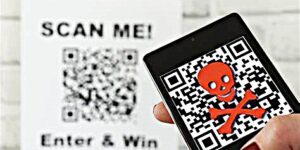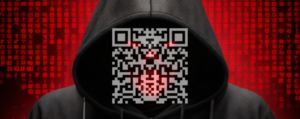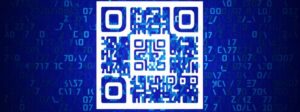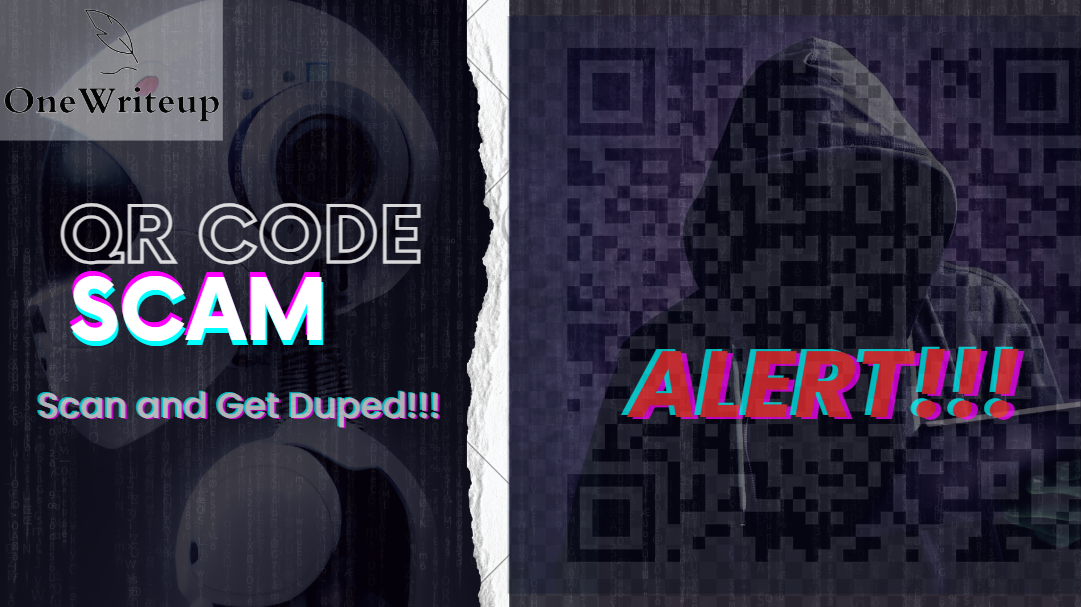
Introduction:
A QR code, full form; Quick Response code, is a type of scannable matrix barcode that can store a variety of data, such as URLs, contact information, or product details and even bank account details. It’s commonly used for quick access to websites or digital content by scanning the code with a smartphone camera. However, QR codes can also be exploited in cyberattacks known as “quishing”. In a quishing attack, a malicious QR code redirects users to a phishing site, where attackers can steal sensitive information like login credentials or financial details. This highlights the importance of being cautious when scanning unknown or suspicious QR codes.
QR code: working
If you’re reading this article, there is a very less possibility that you don’t know what QR codes are, or what does that mean. In simple words it’s a box like structure which has certain patterns, mostly found black in color. It stores specific information in it, usually we use them on daily basis to make payments, joining groups on different platforms, etc. Have you ever wondered how does that works? it’s simple 🙂 when you scan a QR with your camera, the device interprets and converts it into or say decodes it into a simple human readable website link/payment request etc. nowadays it has become an easy task to spread even large information through QR codes.
How scanning a QR is Risky?

As the QR codes are getting commonly used, we can see them sticked on walls and banners too, which says, scan and win, etc. Lot of people even scan them happily with curiosity. but some dark entities are taking advantage of this easily hanging fruit, e.g.: a law graduate was recently arrested for stealing 5 lakhs from a buddhist temple by swapping the QR code. similarly, In a quishing attack, the attackers create a QR code and link it to a malicious website. Upon using their phones to scan the QR code, victims are directed to the malicious site. The site may prompt victims to enter login information, financial details, or personal information.
Preventions and precautions:
To prevent getting duped in a scam, do not click any link straight after scanning, do check it once. see if it doesn’t look weird, see the keyword if they match what you were looking for then only proceed further, if the link seems suspicious and contains invalid characters or contain a series of number, never click them, as they are possibly the phishing links. never ever scan a QR from unknown source. always use verified applications for scanning QRs so that it doesn’t takes you directly to the web without asking the permission.

Conclusion:
As quishing represents a growing cybersecurity threat as QR codes become more integrated into daily life. The simplicity of scanning a QR code, often seen as a convenience, can quickly turn into a security risk if users are not vigilant. As demonstrated by recent incidents, such as the swapping of QR codes in public spaces or religious sites, attackers are exploiting this trust aiming to steal sensitive information or funds. To mitigate this risk, it is crucial for users to verify the source of QR codes before scanning and for organizations to educate the public about the dangers of quishing. This proactive approach can help safeguard against falling victim to these increasingly sophisticated attacks.
Thank you for reading till last, hope you got to learn something from this, for getting more article similar to this topic you can stay tuned. you can also read my previous article which was about ICBC Finance services felling into a Ransomware attack.








